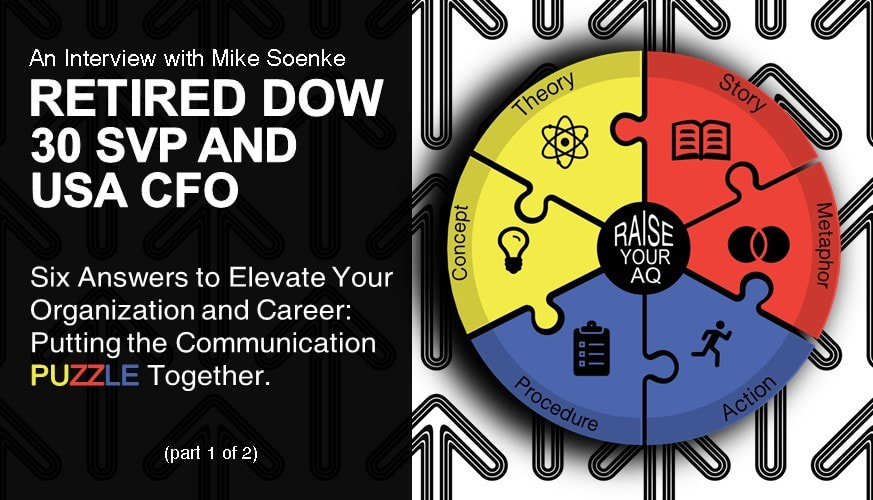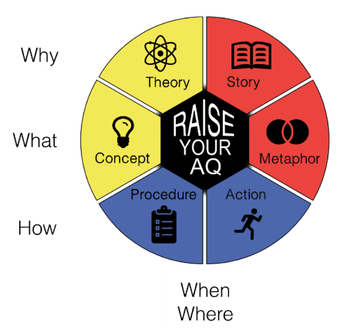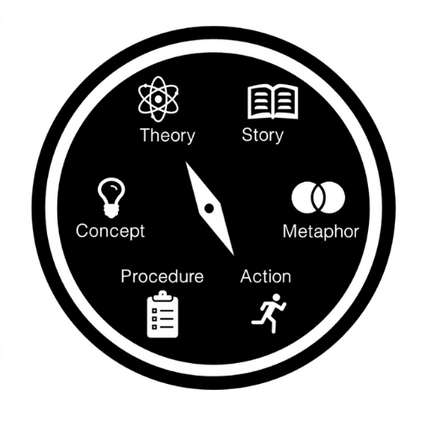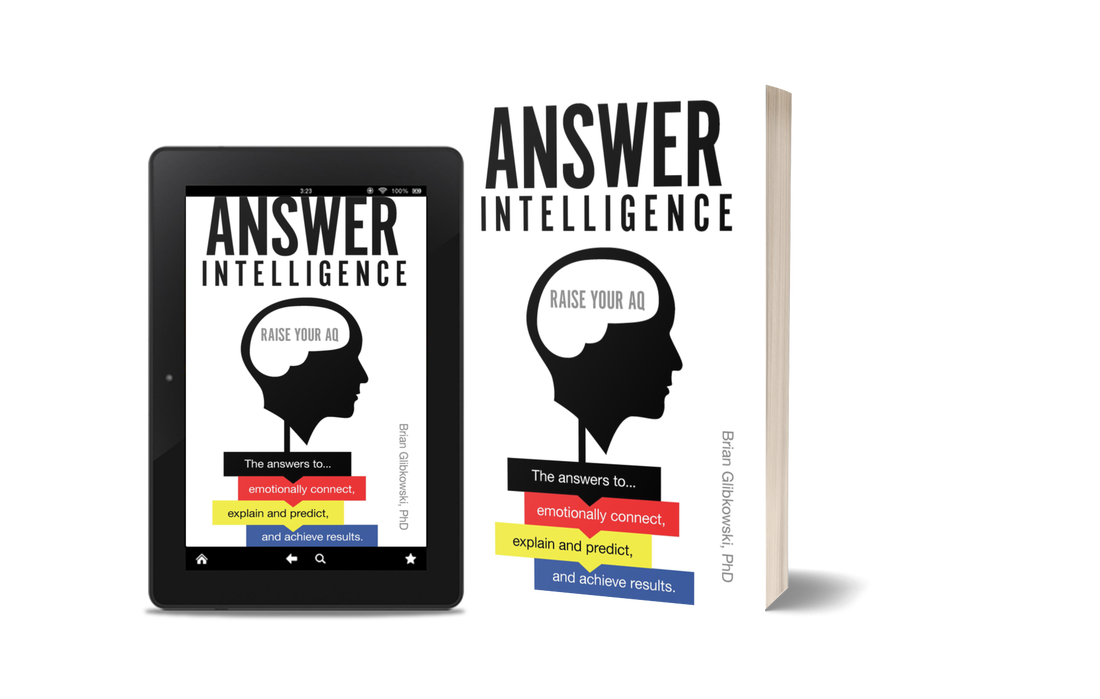Ace Your Next Interview in the New Year. Prepare Now. Take the new Interview AQ Assessment.12/28/2020 If you’re looking to ace your next job interview, the first place you’ll likely turn to is the internet. Various sites will provide you with extensive lists of possible questions, tips, and tricks on how to answer them, such as Inc’s “27 Most Common Job Interview Questions and Answers,” and Indeed’s “125 Common Interview Questions and Answers (With Tips).” While these websites will help you with some aspects of your interview, telling you to research the company you want to work for and how to spin your greatest weakness to seem like a strength, they can only talk about so many questions. If you really want to ensure your success in your next interview, you need to know not only how to answer typical interview questions, but how to answer all types of questions that might get thrown at you as well. That’s where Answer Intelligence, or AQ, comes in. Answer Intelligence (AQ)® is the ability to provide elevated answers to explain and predict in a complex world, emotionally connect, and achieve results. Interview AQ, specifically, is how to answer different types of interview questions using the AQ principles. Knowing the strategies that you can use to best answer different types of questions will help you be prepared to answer anything the interviewer might throw your way. Mock InterviewAll important questions can be categorized as why-, what-, or how-questions. Below is a mock interview question along with a High AQ response. Interviewer: "What is your #1 skill?" High AQ Job Candidate: "My number #1 skill is leadership. I define leadership as the ability to inspire others and hold others accountable [Concept answer]. Leadership is like a braided rope. When two strands of a rope are woven together, the rope is stronger then it would be otherwise. The same is true for leadership, I aim to both inspire and hold others accountable in my daily interactions [Metaphor answer]. By Answering this what-question twice (High AQ Practice 2), the job candidate appeals to the logical side of the brain (with a concept answer) and the creative side of the brain (with a metaphor answer).HH Take the Interview AQ AssessmentSo how do you improve your Interview AQ? You can learn what your Interview AQ score is here for free, and read more about what Answer Intelligence is on the High AQ blog. Below, I’ve outlined two common interview questions below, and how different AQ strategies can be used to best answer these questions. If you found Answer Intelligence (AQ)® an interesting framework, please share this post with others. Especially, share this with those looking for a job in 2021!
0 Comments
Sales Answers Matter. Answer Intelligence (AQ)® Matters. Take the New Sales AQ Assessment.12/16/2020 There are many sales methodologies that focus upon questions. Answers are underappreciated, often overlooked, and given little critical attention in sales. Addressing an emphasis-gap upon answers in all important conversations, I authored the forthcoming book Answer Intelligence: Raise Your AQ. Sales involves important conversations where Sales Rep answers determine winning or losing the deal. Today, I announce the availability of the Explore Sales AQ FREE assessment for sales professionals to identify their Sales AQ score and how to improve their sales answers. Sales Answers Every important sales question can be mapped to a why-, what-, or how-question. We take questions for granted. Sales methodologies focus upon questions (we know that). Broadening the lens, as a society there is a taxonomy of questions that we learned as small children... The six-WH questions (what, why, when, where, who, and how) we learned at a young age. These six-questions are so engrained that you don't think about these questions much. Letters in the alphabet are the building blocks for words, sentences, and paragraphs. Without letters in the alphabet, we could not communicate. In similar terms the six-WH questions are building blocks for conversations. However, imagine if you found out that you were missing half the letters in the alphabet; gulp, that would be shocking, if it were true. My book (Answer Intelligence: Raise Your AQ) is built upon a large gap in our understanding of conversations. Yes, we have a taxonomy of questions. However, there is no taxonomy of answers. Consider this, how many answer-types are there? That is a tough question, one that is difficult to answer. The truth is, until my book, there has been no taxonomy of answers to help you navigate your next important sales conversation. Answer Intelligence (AQ)® identifies a taxonomy of six answers (story, metaphor, theory, concept, procedure, action) to help you elevate your answers and improve your influence upon others. Consider the following questions and answers. Which answer would you provide for each of these questions?  Take the Explore Sales AQ Assessment to identify your ability to provide important answers to clients. Explore Sales AQ is a FREE self-assessment and introduction to AQ.
Learn More Perhaps, before you take the Explore Sales AQ Assessment you want to learn more about AQ. The assessment is based upon the 5 High AQ practices, uncovered from academic research with expert communicators. Additionally, if you go to the Explore AQ webpage you can learn more about Sales AQ, as well as other Explore AQ assessments being offered: Explore Interview AQ, Explore Coaching AQ, and Explore Training AQ (and more will be offered soon). If you found Answer Intelligence (AQ)® an interesting framework, please share this post with others.
Mike Soenke is an Executive in Residence at North Central College (Naperville, IL, USA) and retired DOW 30 SVP and USA CFO. In this two-part series, Mike and I discuss Answer Intelligence (AQ)® based upon his experience as a former executive at a DOW 30 corporation. The focus of this blog post (1 of 2) is using AQ to elevate an organization and the next post will be about using AQ to elevate your career. The following interview is edited for clarity. This article is part of the High AQ Interview Series where executives, academics, and thought leaders discuss elevated answers. RelevanceDr. G: “Is AQ important to senior leaders and the organization as a whole?” Mike Soenke: “In my career, as I and others elevated into leadership roles we were amazed at how much of our time was invested in communication. In a large system, there are many stakeholders - including employees, suppliers, vendors, and partners. All of the stakeholders need to understand the vision, strategy, goals, and their role in the implementation.” “In all of my years in the corporate world, I never saw anything in my career like AQ. There are many resources about questions and proactive communication, but not a lot on the most effective ways to connect and respond by providing answers.” Dr. G: “What value add does AQ have?” Mike Soenke: “There are a lot of tried-and-true communication principles that are captured in the framework. For example, telling a story that draws someone in. Also, at our organization, we had the coffers full of organically grown metaphors. Additionally, appealing to both sides of the brain when you communicate [High AQ Practice 2: Answer Twice] is familiar. The real value-add of the thought framework is that it brings it all together and helps people in a structured and logical way. The 5 High AQ practices help you put the framework to work and optimize its effectiveness to further enhance the value-add of the framework.” To punctuate his point, Mike provided an example of a senior leader that was formerly at two competitors. He arrived, got up to speed quickly and used his huge knowledge base. More importantly, he would make connections that others did not see (he was very strategic). When these connections were made, Mike said, “It clicked in your mind and you were immediately upset with yourself that you did not make the connection (it was so intuitive). You were mad at yourself that you had not thought about it prior. I put AQ in this category. Like pieces of a puzzle that fit together, as soon as you see them together, you say to yourself, of course this makes sense. Why has nobody thought of this before? That is the power and magic of AQ.” Dr. G: How would you describe taking advantage of the 5 High AQ practices to someone learning about AQ for the first time? Mike Soenke: “The framework is simple and sophisticated and layered. When you first learn AQ, I recommend focusing upon knowing the six answers and which questions they answer. I would estimate that 50% of the value is in High AQ Practice 1 (Provide Six Answers). Simply knowing there are six answers and cataloguing them to questions is a tremendous advantage.” “Then as you peel the onion back… answering twice, providing complementary answers, using the three styles, are examples of how you can move from novice to expert as you master the sophistication of all the layers. The layering is interesting. AQ provides simplicity at the foundational level [Practice 1] but offers deeper and sophisticated tools and skill as you work through the High AQ Practices 2 to 5. Now you are adding layers of brilliance to it.” High AQ Takeway 1: According to Mike Soenke, 50% of the value in AQ is in learning High AQ Practice 1 and 50% is in learning High AQ Practices 2 to 5. Persons new to AQ should focus on High AQ Practice 1 and experts need to master High AQ Practices 2 to 5. AdoptionDr. G: “How would an organization best adopt AQ? Mike Soenke: “In my experience a framework like AQ enters an organization through executive leadership. They would get value in it and get passionate about, and then want to adopt it organizational wide. This is how it worked for us when we adopted programs to improve the culture, teamwork and communication in the company. After initial training, lunch and learns and small group support tools were conducted to further embed the framework, its terms, and syntax into the culture. That is a significant investment and difficult to do if leadership is not bought in up front. In my mind it is so critical for the ultimate success of a significant program if it starts with senior leadership." Dr. G: “Interesting that with other frameworks a lot of time is spent on learning the syntax and terms. Do you think there is something that is more intuitive about AQ?” Mike Soenke: “I think AQ is potentially more intuitive, in that it is built upon questions (why, why, how, where, where) and answers (story, metaphor, theory, concept, procedure, action) that we are mostly familiar with in everyday communication. Plus, the idea of using a communication framework based on questions and answers is just very logical and straightforward. I think all of this in combination can lead to easier adoption.” High AQ Takeway 2: According to Mike Soenke, AQ is best adopted top-down from senior leadership and AQ has a higher-chance of successful adoption because the framework is simple and intuitive. Take a look at the Part 2 of this blog post series, AQ and your career.
If you found Answer Intelligence (AQ)® an interesting framework, please share this post with others. Introduction
Dr. Freiburger and I discussed how he has demonstrated High AQ both in terms of winning client business and during a coaching engagement. He also speculates that AQ can be an effective meeting management tool for executive coaches. The following interview is edited for clarity. This article is part of the High AQ Interview Series where executives, academics, and thought leaders discuss elevated answers. Winning DealsDr. G: “Tell me about a coaching deal you won.” Dr. Chris Freiburger: “They were interviewing other coaches. All had experience with the client.” Dr. G: “Invariably, a question is asked, ‘Why should we hire you?’” Dr. Chris Freiburger: “I would provide a story. This differs from my competitors. Most executive coaches will tell you there is a rigorous framework, 1-hour interview, tests, 6 coaching meetings, every 3rd week. They discuss a standard engagement.” High AQ Takeaway 1: If you are asked a why-question, provide a story or a theory answer. Too often those with Low AQ provide the wrong answer to the question being asked. Dr. G: “Tell me more about what distinguishes a High AQ story from a Low AQ story.” Dr. Chris Freiburger: “An effective story is a touchpoint to all of the other five High AQ answers. For example, I can transform my story into a catalyst metaphor… I’m here to challenge and push. Or, I can discuss my theory of coaching, or any of the other answer types. I can use this story to draw a contrast with my competitors who often focus upon rigid procedures and actions. In my story I can highlight that as a catalyst the procedures will sometimes be sequential, sometimes reversed. I can draw a sharp contrast between my dynamic approach and the mechanical approach of some of my competitors when it comes to coaching methods.” High AQ Takeaway 2: Those with High AQ can take any given answer and transform it into the other answer types. This makes for an economical and reinforcing conversation. Effective ConversationsDr. G: “The difference between High AQ and Low AQ is often subtle. Can you illustrate this subtle difference with a client engagement?” Dr. Chris Freiburger: “I just got off a call with an executive coaching client. I asked him a question that threw him for a loop. I said, ‘I want you to tell me, when your boss comes to you to pick your brain about ideas, does he view you as a thought leader or a thought partner?’ He wrestled with this question. Then, we discussed that a thought partner is someone you bounce ideas off (lower level thinking) and a thought leader is someone you ask for advice about the future. He got it. Then I told my client, ‘I want you to think about how you take your skills and attributes and leverage them in a way so that you become a thought leader.’” High AQ Takeaway 3: Those with High AQ are in complete command of important concepts. This example from Dr. Freiburger conveys several subtle aspects of High AQ concepts. Specifically: (1) The client conversation is centered around teasing out the differences between seemingly similar concepts: thought partner and thought leader. Additionally, by providing two concepts, the client is engaged in active thinking. Dr. Freiburger said, “I could have said, ‘part of your development need is to position yourself as a thought leader with your boss.’ I don’t think that engages him in a way that is interesting.” (2) Transform an answer into a question. Effective coaches guide a client from point A to point B in a conversation. Dr. Freiburger transformed a concept-answer (the thought leadership concept) into a question. When you understand an answer, it gives you insights into asking more interesting and effective questions to guide a client. AQ as an Executive Coaching ToolDr. G: “How can someone use AQ in executive coaching?” Dr. Chris Frieberger: “I’ve facilitated a lot of meetings with Dr. Edward de Bono’s Six Thinking Hats®. In a 30- or 60-minute meeting, most leave and have a sense that nothing was accomplished. According to Dr. de Bono’s framework, nothing gets done because everyone thinks differently at the same time. One attendee is in brainstorming mode, another in critical thinking mode. Everyone is wearing different hats. The insight of Six Thinking Hats® is to get all attendees to put on the same hat at the same time to communicate effectively. AQ can create the same type of mental alignment. For example, if a what-question is asked, all meeting attendees will know a concept and/or metaphor is an appropriate answer. If you layer in the 5 High AQ practices, you will be using the same rules of effective conversations. For example, High AQ Practice 3 (Provide Complements) holds that adjacent answers complement each other, and opposite answers can resist each other. In this manner, if a manager is a storyteller, and a procedure is the desired answer, it explains why a story provided to a how-question can derail the conversation (they are opposite answer types). I have found that when using six hats to facilitate a meeting you can take people through a meeting a lot faster and effectively. Similarly, AQ is an approach that can create alignment around questions and answers to efficiently and effectively navigate high stake conversations.
If you found Answer Intelligence (AQ)® an interesting framework, please share this post with others.
|
Access Octomono Masonry Settings
AuthorDr. Brian Glibkowski is the author of Answer Intelligence: Raise your AQ. Archives
October 2022
Categories
All
|
About AQ
Answer Intelligence (AQ)™ is the ability to provide elevated answers to explain and predict in a complex world, emotionally connect, and achieve results. Are you conversation ready?
Meet HarperHarper's story illustrates the transformative power of AQ in her own career and in the success of her organization.
|
AQ Upskilling PlatformAI is machine thinking. AQ is human thinking (developed based on academic research) in terms of simple questions (why, what, how, when, where, who) and answers (concept, metaphor, theory, story, procedure, action) that elevate human-to-AI and human-to-human communication.
|
Quick Access LinksBuy the Book
Explore AQ (Free Assessment) AQ TEDx Video Professional Services Firms + AQ Brian Glibkowski, PhD - AQ Creator Meet Harper - Overview Video Meet Mark - Software Case Reasons You Need AQ |
Featured |










 RSS Feed
RSS Feed